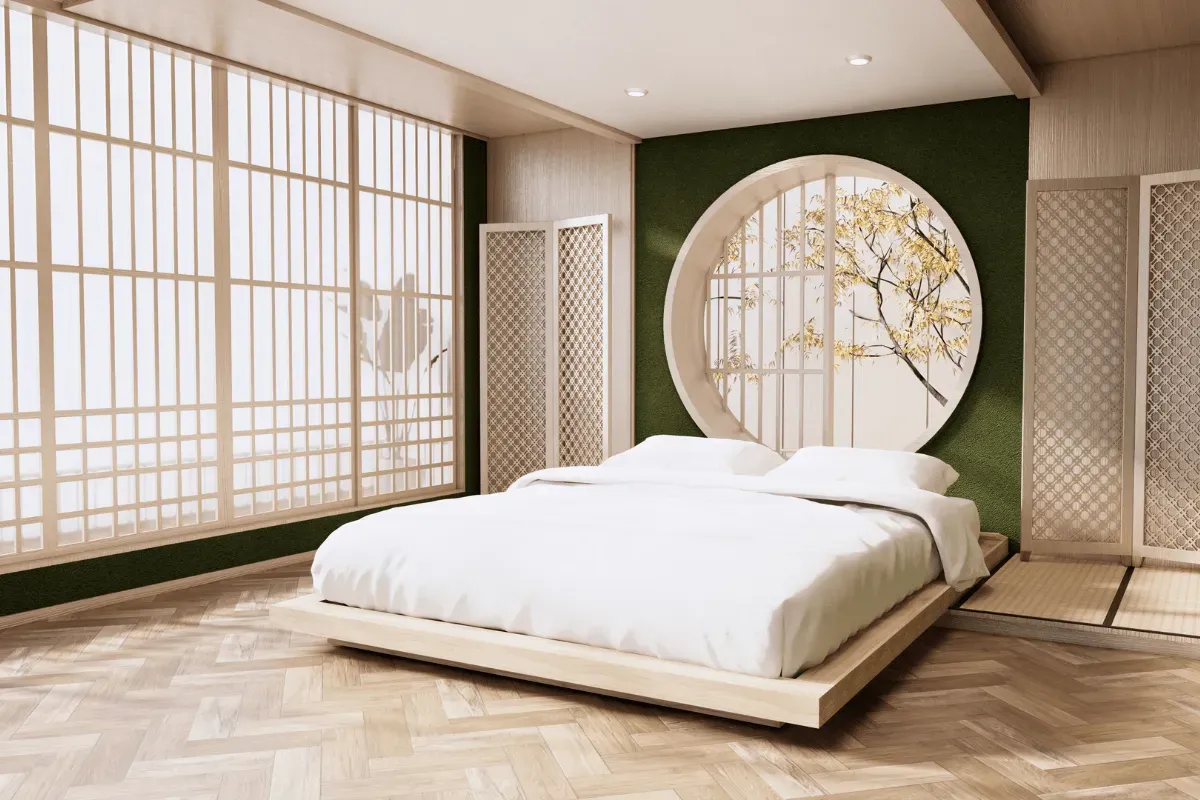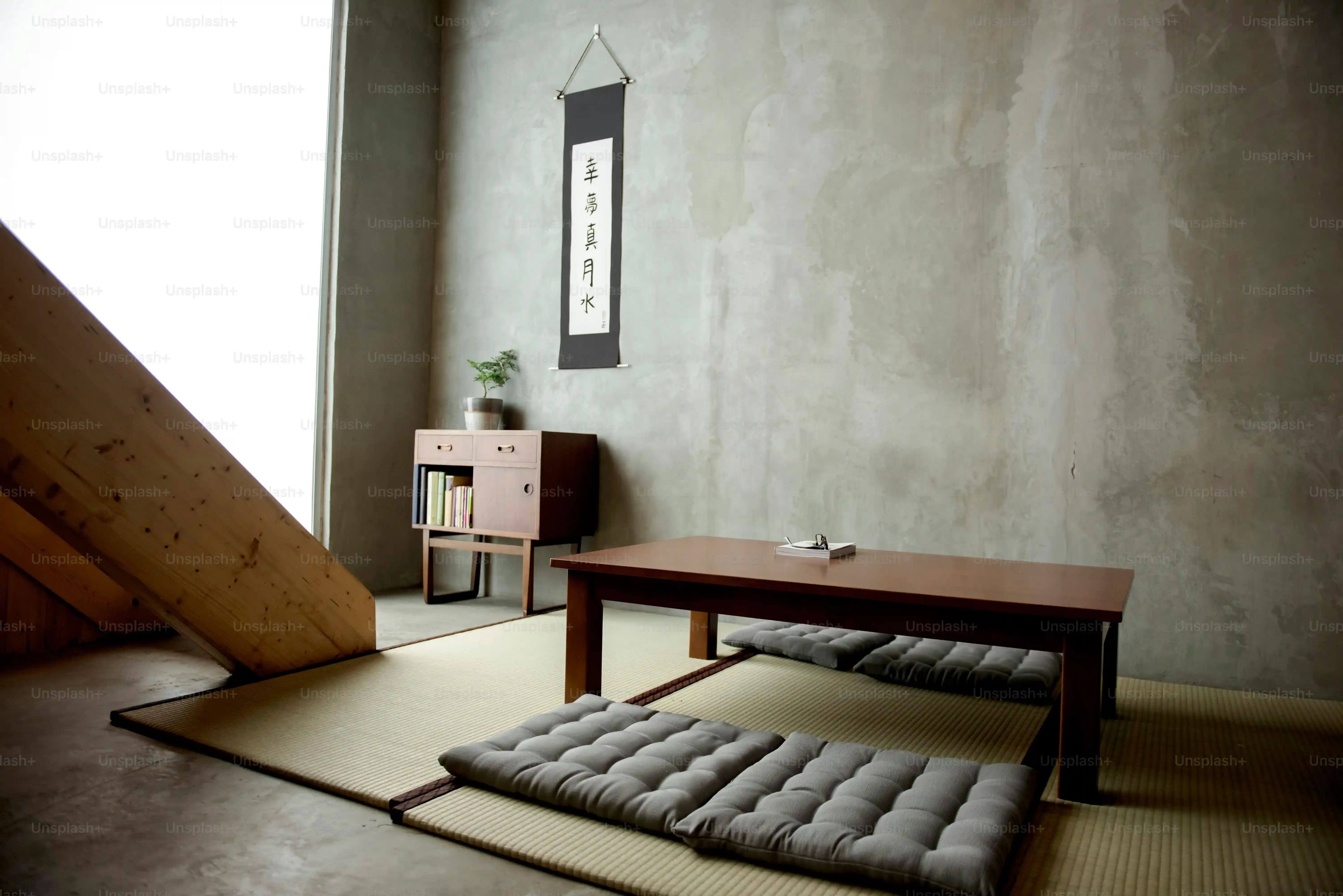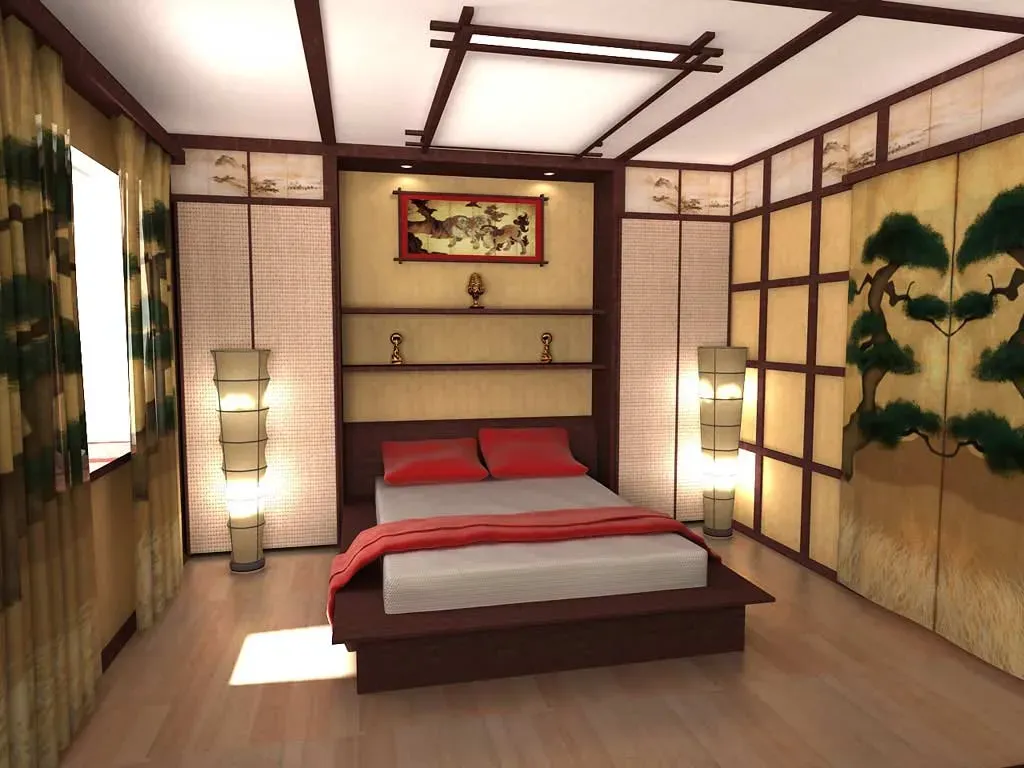Table of Contents
Ever walk into your bedroom and feel... stressed? Like the walls are closing in, and that pile of clothes in the corner is silently judging you? Modern life piles on the clutter, both physical and mental. We crave a space that feels like a true escape, a place to actually unwind, not just collapse. That's where the timeless appeal of Japanese design, specifically using japanese bedroom furniture, comes into play. It's not just about low beds and clean lines; it's a whole philosophy focused on simplicity, tranquility, and making the most of limited space.
Why Japanese Bedroom Furniture Creates Calm Spaces
Why Japanese Bedroom Furniture Creates Calm Spaces
The Power of Less: Minimalism and Space
Look, nobody wants to feel like they're sleeping in a storage unit. That's the beauty of Japanese bedroom furniture – it's all about stripping away the unnecessary. Think clean lines, simple forms, and a deliberate lack of clutter. This isn't just an aesthetic choice; it's functional. By keeping things minimal, you create visual breathing room. Your eyes aren't darting from one busy object to the next, and your brain gets a chance to relax. It’s like your room takes a deep breath, and you can too. This focus on negative space makes even small rooms feel larger and more open, which is a huge win for mental peace.
Connecting with Nature: Materials and Height
Another reason Japanese bedroom furniture just feels right is its connection to the natural world. You'll see a lot of wood, often left in its natural state or lightly finished. Bamboo, tatami mats made from woven rush grass, even cotton futons – these materials bring an organic warmth into the room. Paired with the typically low profile of the furniture, like platform beds close to the floor, it grounds the space. There's something inherently calming about being closer to the earth. It feels stable and secure, a stark contrast to towering, imposing bed frames that can feel a bit... precarious. This deliberate choice of materials and height contributes significantly to why Japanese bedroom furniture creates calm spaces.
- **Simplicity:** Focuses on essential forms and functions.
- **Minimalism:** Eliminates clutter and unnecessary decoration.
- **Natural Materials:** Incorporates wood, bamboo, and natural fibers.
- **Low Profile:** Furniture sits close to the ground, promoting a sense of groundedness.
- **Harmony:** Aims for balance and tranquility in the space.
Essential Pieces: Beds, Futons, and Tatami Mats for Japanese Bedrooms
Essential Pieces: Beds, Futons, and Tatami Mats for Japanese Bedrooms
Low-Profile Beds: Grounded Comfort
Alright, let's talk about the foundation of any bedroom: the bed. When you think of Japanese bedroom furniture, the image that often pops up is a low-slung platform bed. These aren't just for looks; they serve a real purpose. Being closer to the ground fosters that sense of calm and stability we talked about. Plus, many designs incorporate minimalist frames, often made from solid wood, with little to no headboard – or just a very simple one. Some even have integrated nightstands or storage, keeping things tidy and visually uncluttered. It’s about a clean, simple structure that supports your mattress without dominating the room or collecting dust bunnies underneath like some kind of monster magnet.
Futons and Tatami: The Flexible Option
Now, if you want to go truly traditional or need maximum flexibility, the futon is your friend. We're not talking about that lumpy college dorm sofa-bed nightmare. A proper Japanese futon is a padded mattress that you lay directly on the floor, often on top of tatami mats. The genius here is that you can roll it up and store it away during the day, instantly transforming your bedroom into a multi-purpose space – maybe a meditation area, a tea spot, or just open floor for activities that don't involve sleeping. Tatami mats, woven from rush grass with a soft, slightly yielding texture, provide a firm but comfortable base and have a distinct, calming scent. Using them with a futon is the ultimate expression of space efficiency and minimalist living within Japanese bedroom furniture.
- **Platform Beds:** Provide a low, stable base with clean lines.
- **Futons:** Offer flexibility; can be stored away to free up space.
- **Tatami Mats:** Provide a natural, firm floor covering and a base for futons.
- **Combined Use:** Futons are traditionally placed directly on tatami mats.
- **Space Saving:** Essential for smaller living areas, a core principle.
Designing Your Sanctuary with Japanese Bedroom Furniture Principles
Designing Your Sanctuary with Japanese Bedroom Furniture Principles
Embracing Simplicity and Function
Designing a sanctuary with japanese bedroom furniture starts with a ruthless edit. Look around your current room. What's in there that doesn't serve a purpose or bring you genuine peace? That stack of magazines from 2019? The exercise bike that's become a very expensive clothes rack? Get rid of it. Japanese design is inherently functional. Every piece of furniture, from the low platform bed to a simple chest of drawers, has a job to do, and it does it without fuss or unnecessary ornamentation. Think about how you actually use the space. Do you need a massive dresser, or would a smaller chest and some clever closet organization suffice? Prioritize function, and the simplicity will follow naturally, clearing not just the floor, but your head too.
Curating Color and Texture
Forget loud patterns and jarring colors. The palette for a Japanese-inspired bedroom is typically muted and calming. Think soft neutrals: warm whites, gentle beiges, earthy browns, and subtle grays. These colors act as a quiet backdrop, allowing the natural textures of the materials to stand out. The grain of the wood, the weave of the tatami, the subtle texture of linen bedding – these are what add visual interest without creating chaos. It’s like composing a piece of music with fewer notes, where each note has more impact. Bringing in a single, carefully chosen plant can add a touch of vibrant green and life, but the overall feel should be one of understated elegance, a quiet harmony that supports restful sleep.
What's the single biggest clutter culprit in your current bedroom? Getting rid of that one thing could make a huge difference.
Strategic Lighting and Minimal Decor
Lighting plays a crucial role in setting the mood. Harsh overhead lights are out. Instead, layer soft, warm lighting from sources like low-level lamps or diffused wall sconces. Shoji screens, often used in traditional Japanese homes, diffuse light beautifully and add a lovely, soft glow. The goal is to create a gentle, ambient light that encourages relaxation as evening approaches. When it comes to decor, less is definitely more. Instead of shelves crammed with knick-knacks, select one or two meaningful pieces – maybe a single piece of art that speaks to you, a beautiful ceramic vase, or a small, carefully pruned bonsai. Each item should feel deliberate and special, not just space filler. This intentionality is key when incorporating japanese bedroom furniture principles.
Finding Authentic and Quality Japanese Bedroom Furniture
Finding Authentic and Quality Japanese Bedroom Furniture
Finding Authentic and Quality Japanese Bedroom Furniture
so you're sold on the idea of a serene Japanese-style bedroom. Now comes the tricky part: actually finding furniture that isn't some flimsy particleboard knock-off masquerading as minimalist chic. Real, quality japanese bedroom furniture often features solid wood construction, traditional joinery (think interlocking pieces instead of just screws and glue), and natural finishes. Don't be fooled by something painted black and called "Zen." Look for retailers who specialize in Asian or modern minimalist designs, and dig into the product descriptions. Are they vague about materials, or do they specify solid oak, maple, or bamboo? Does it feel substantial, or like it might collapse if you look at it funny? Finding authentic pieces means looking beyond the surface trend and understanding what makes the craftsmanship durable and true to the style's roots.
Your Peaceful Space Awaits
So, there you have it. Stepping into the world of japanese bedroom furniture isn't just about buying a specific style of bed or a few mats. It's about adopting a mindset of less is more, prioritizing calm, and designing a space that truly serves its purpose: rest and rejuvenation. It requires a bit of intentionality, maybe even letting go of some stuff you thought you needed. But the payoff? A bedroom that doesn't just look good in photos, but actually feels like a quiet harbor at the end of a long day. It’s less about trends and more about crafting a personal retreat that stands the test of time and the clutter of modern life. Give it a shot; your future, calmer self might just thank you.
